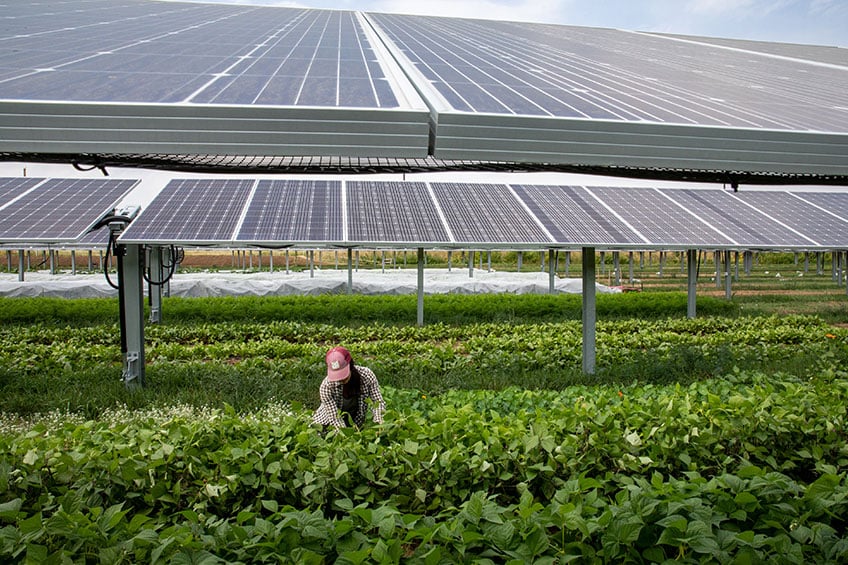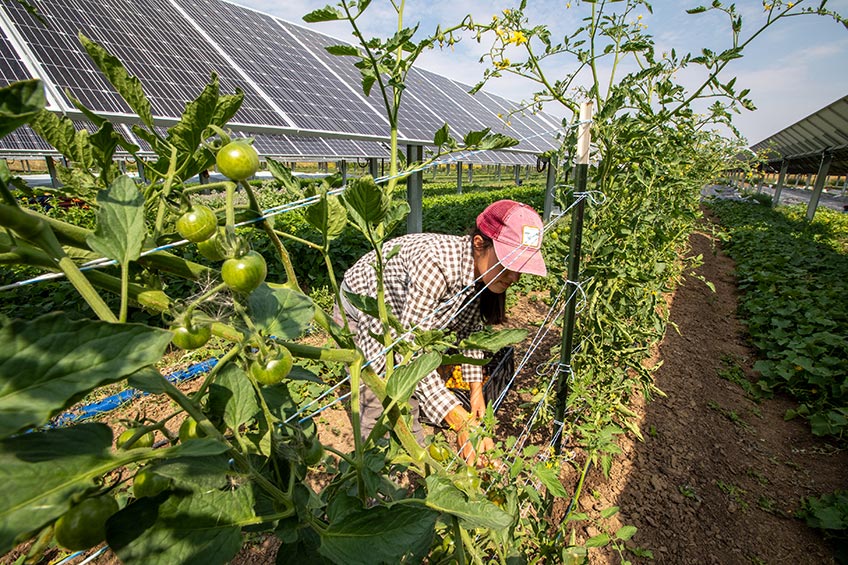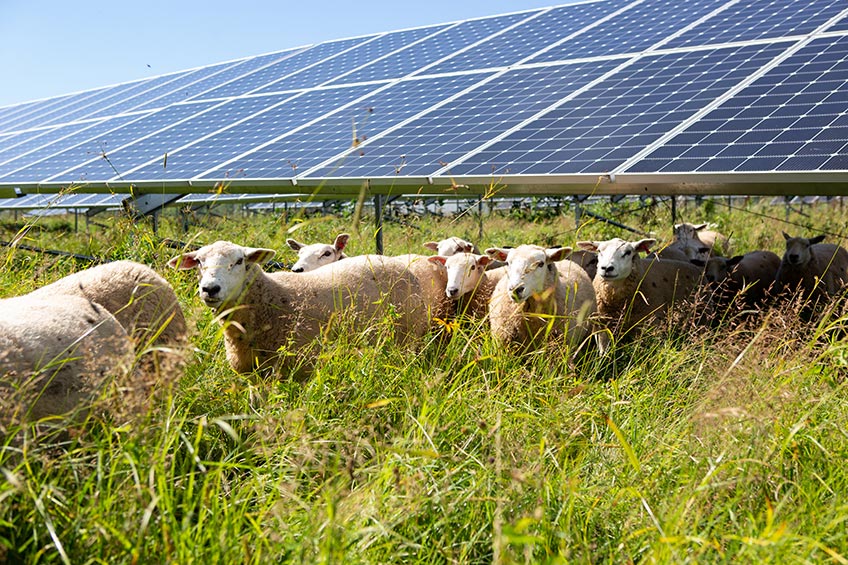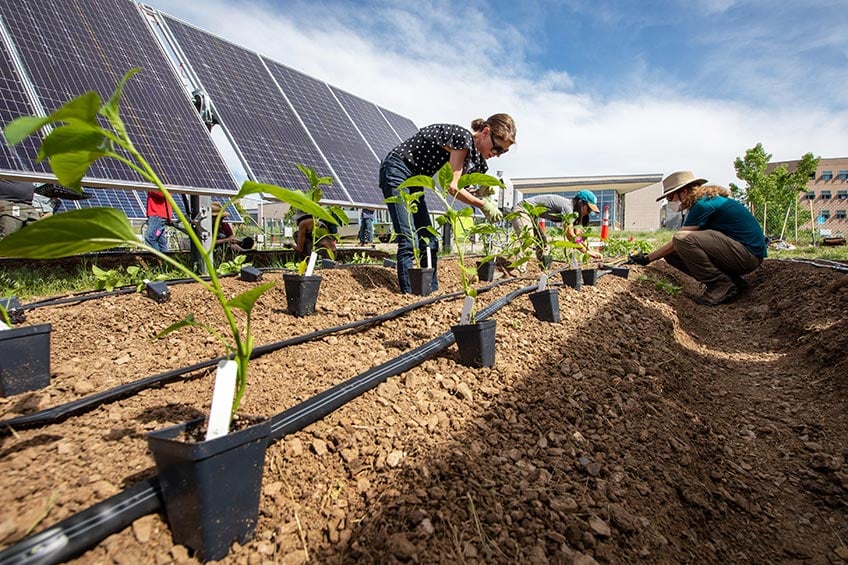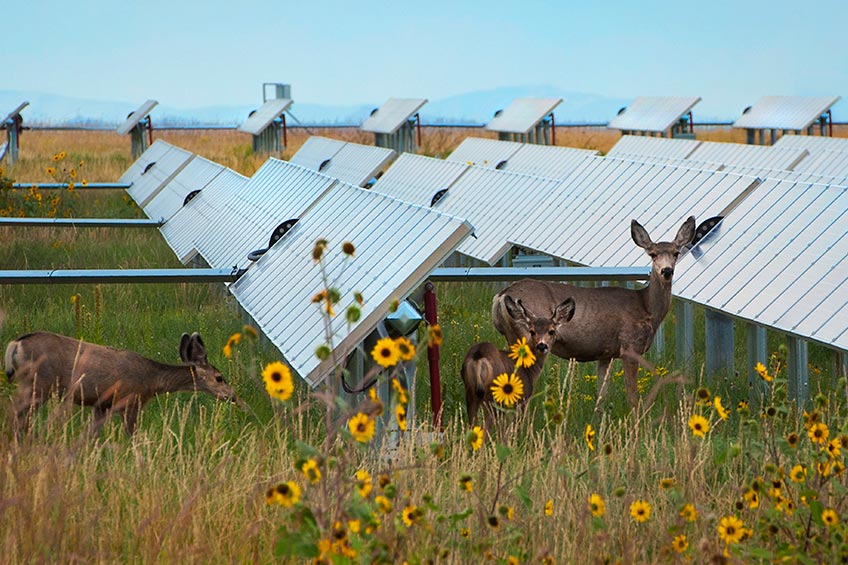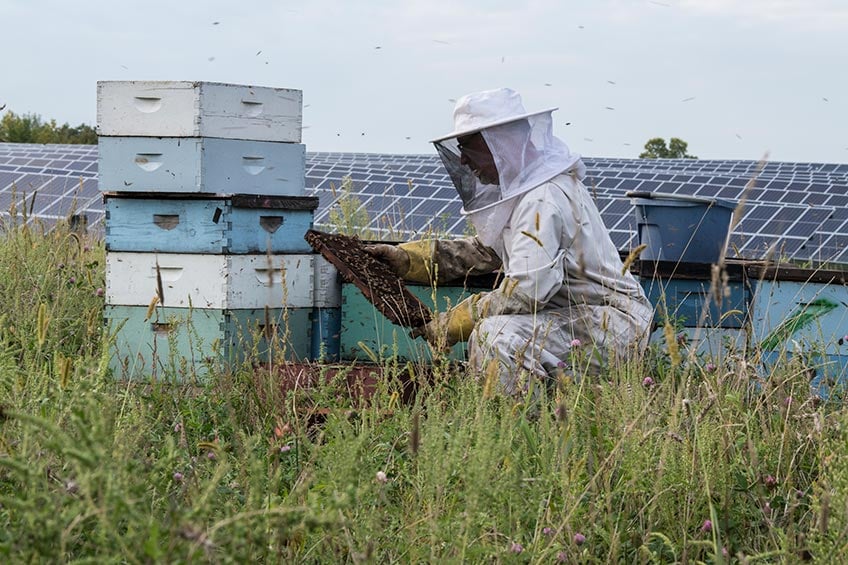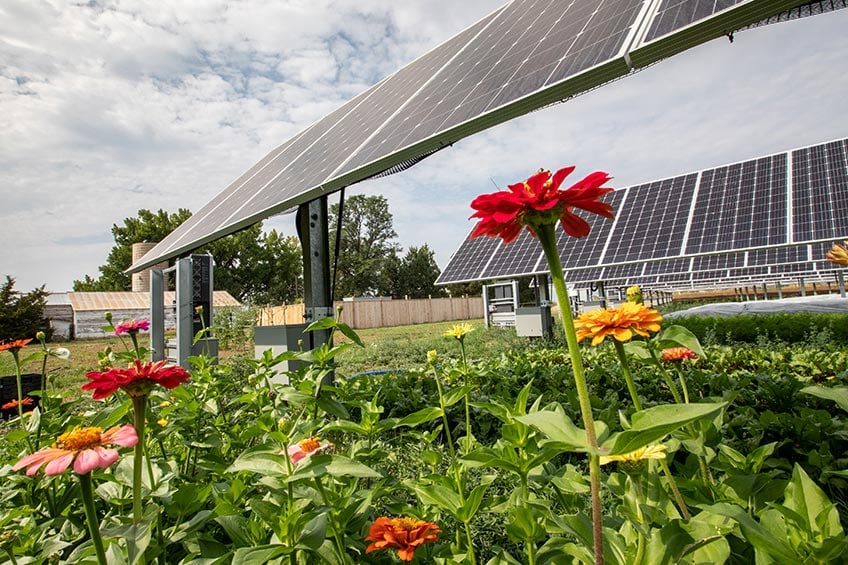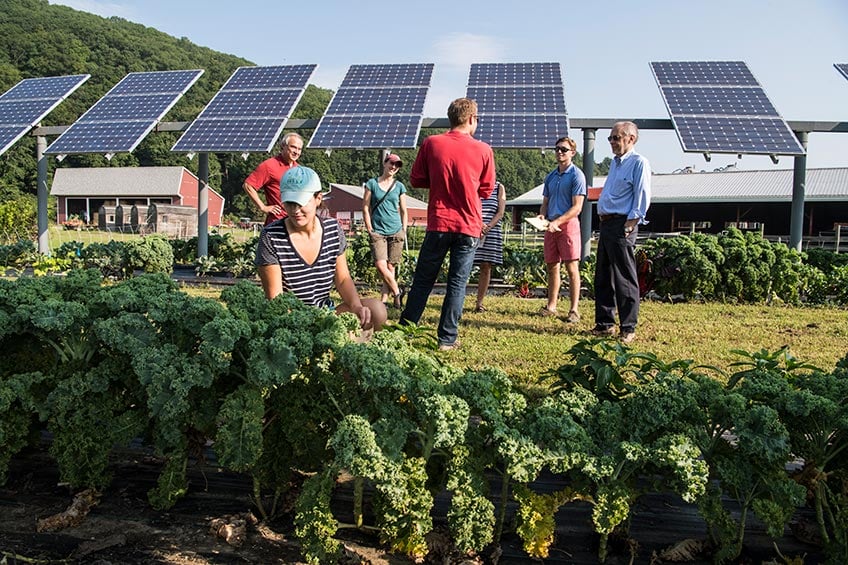Agrivoltaics
Agrivoltaics pairs solar with agriculture, creating energy and providing space for crops, grazing, and native habitats under and between panels. NLR studies economic and ecological tradeoffs of agrivoltaic systems.
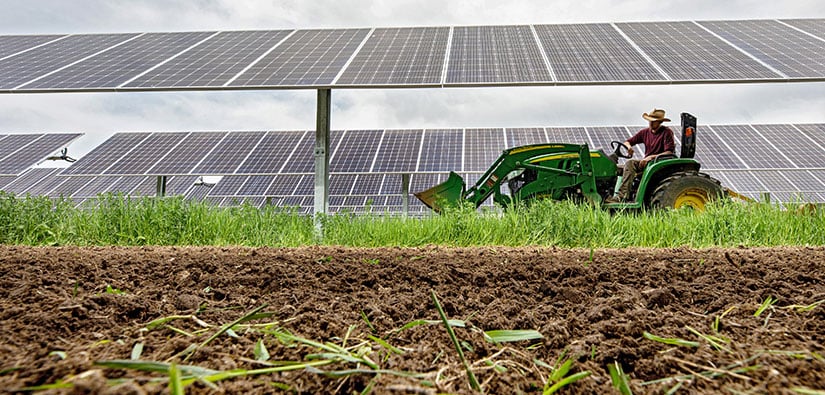
To meet renewable energy goals by installing large-scale solar operations, agricultural land may be taken out of food production, but agrivoltaics offers the potential to balance food production and renewable energy goals. Under the right conditions, both crops and solar production can do better when paired together, and solar installations can provide surprising economic and ecological benefits.
Agrivoltaics is not always more expensive than traditional solar development, but certain configurations can be more complex for planning and permitting. A successful agrivoltaics project requires two or more groups who often have very different priorities—the farmer or land manager and the solar developer—to find a solution that works for both. NLR provides research and analytical support to document the benefits and costs of agrivoltaics and works to bring local community stakeholders and solar developers together to find innovative solutions that can be shared and put into practice at scale.
Benefits of Agrivoltaics
Ecosystem Services, Pollinator Habitat, and Stormwater Management
Conventional site preparation for installing ground-mounted PV systems—which typically can involve grading, compacting soil, and using herbicides—can lead to impacts on soil health and water quality that affect the feasibility of crop production and grazing. Solar installations that preserve native habitats and ecosystems and create habitat for pollinators and other beneficial insects can potentially save on operations and maintenance costs over the life of the project.
Access the resources page on the Innovative Solar Practices Integrated with Rural Economies and Ecosystems (InSPIRE) website, along with the benefits of native and low-growth vegetation in solar site preparation and solar site operations and maintenance considerations.
Agrivoltaic projects that utilize different ground covers and low-impact development practices can make solar sites more permeable to reduce stormwater runoff. The Photovoltaic Stormwater Management Research and Testing (PV-SMaRT) project addresses the stormwater runoff challenges of jurisdictions as they consider permitting for solar arrays.
Crop Production
Different crops can thrive under the partial shade of solar installations; crops that are successfully grown in the open air in a particular region have been shown to be compatible with agrivoltaic configurations between, under, or on the perimeter surrounding solar panels.
The partial shade of solar panels reduces the amount of direct sunlight reaching crops, changing the microclimate (cooler in the day, warmer at night) and increasing soil moisture levels. There are both benefits and tradeoffs of co-locating agricultural crops with solar installations. In arid climates, for example, there might be higher yields with lower watering requirements; in extremely wet environments, panel spacing and other factors play an important role in managing on-site water distribution and eventual yields.
Learn more on the InSPIRE website about co-locating agricultural crops and solar installations and access a financial calculator that weighs costs, energy, and agricultural tradeoffs.
Grazing
Foraging livestock can manage vegetation under solar arrays, which can be considered at the early phases of solar planning and installation by seeding appropriately and raising modules, wires, and electrical boxes. Livestock can reduce the maintenance costs of trimming beneath panels and reduce the need to use herbicide. Animals also benefit from the shade provided by solar panels.
Learn more about grazing livestock co-located with solar installations in an NLR news story Growing Plants, Power, and Partnerships.
What Does Agrivoltaics Look Like?
Key Projects
Innovative Solar Practices Integrated With Rural Economies and Ecosystems
The InSPIRE project provides foundational data to stakeholders by combining innovative field-based research with analytical studies so landowners, agricultural entities, the solar industry, and state decision makers can integrate agrivoltaics into their practices. Visit the InSPIRE website to find agrivoltaics sites across the United States and learn more.
Photovoltaic Stormwater Management Research and Testing
The PV-SMaRT project helps local and state authorities make PV solar permitting decisions by performing foundational research on stormwater runoff. PV-SMaRT researchers developed a Stormwater Runoff Calculator, accessible on the University of Minnesota website, and identified important factors for permitting and water-quality and stormwater management at solar sites.
Partner Projects
Sustainably Co-Locating Agricultural and Photovoltaic Electricity Systems, University of Illinois
A USDA-funded project led by University of Illinois at Urbana-Champaign researches agrivoltaic systems in a variety of land and climate types to increase crop production, produce renewable energy, and maximize farm profitability.
Pollinator Habitat Aligned With Solar Energy, University of Illinois
A project funded through the U.S. Department of Energy Solar Energy Technology Office brings together researchers and large-scale solar developers to investigate the ecological and economic benefits as well as performance impacts of co-located pollinator plantings at large, utility-scale PV facilities.
AgriSolar Clearinghouse
A project funded by the U.S. Department of Energy and led by the National Center for Appropriate Technology, it connects businesses, land managers, and researchers with trusted resources to support the growth of co-located solar and agriculture.
Community Centered Solar Development, Lawrence Berkeley National Laboratory
This project funded by the U.S. Department of Energy and led by Lawrence Berkeley National Laboratory works with local communities to understand concerns, benefits, and drawbacks of large-scale solar. Its goal is to help communities align their solar energy planning with community values, energy and procedural justice themes, and developer requirements.
Resources
Farmer's Guide to Going Solar, U.S. Department of Energy
Lighting the Way for Agrivoltaics: How NLR Empowers Communities To Capture the Benefits of Solar Energy, Agriculture, and Ecosystems, NLR News Story
Growing Plants, Power, and Partnerships Through Agrivoltaics: Solar and Agriculture Pair Well Together, Thanks to Planning and Cooperation, NLR News Story
InSPIRE Agrivoltaics Primer, OpenEI
The latest research and publications on agrivoltaics in the InSPIRE data portal, OpenEI
Contacts
Lead Energy-Water-Land Analyst, Crop Production and Grazing
Energy and Environment Analyst, Ecosystem Services and Stormwater Management
Share
Last Updated Dec. 7, 2025

